Disclosure: Meeple Mountain received a free copy of this product in exchange for an honest, unbiased review. This review is not intended to be an endorsement.
During my first play of The Gang (2024, KOSMOS) at Gen Con 2024, I had the chance to learn the game from the publisher. I was intrigued by the whole production: The Gang is a poker game, played cooperatively, where players use poker chips to hint at the quality of their hand. Using a theme so loose I laughed out loud when it was explained to me—fellow thieves are working together to rob a bank, and to succeed, they have to play poker cooperatively!!—The Gang gets a ton of mileage out of the Texas Hold ‘Em format of poker, a game that I didn’t think fit into a co-op format.
But I was wrong. Worse, I was wrong to assume that the people who published other great card games such as The Crew: The Quest for Planet Nine suddenly didn’t know card games. That’s because The Crew is the single-most played card game that has hit my table over the last five years by a sizable margin. (And, I’m told the sequel is even better than the base game.)
All this means that even if you don’t play poker, you need to try The Gang. Its initial conceit makes for a fun time at the table, then it includes three additional modes of play to keep things spicy.

Texas Hold Up
The Gang is a 3-6 player cooperative poker experience. Just like a game of Texas Hold ‘Em, players are dealt two cards, then a series of cards is revealed from the deck until five cards eventually appear face up in the middle of the table.
There are four series of rounds where players—without talking—signal to other players what the quality of their hand is when adding the face-up cards that are slowly revealed each round. The first signaling opportunity comes during the “pre-flop” portion of the round, based solely on the first two cards that were dealt to each player. Signals are sent using poker chips across each round’s four distinct phases—first using white poker chips, then yellow, orange, and finally red. Chips equal to the player count are placed in the middle of the table. Players simultaneously grab a chip with a star ranking on the front of the chip—one star means you’ve got a terrible hand, with the highest star ranking (so, three stars in a three-player game, for example) meaning you have something really juicy. Players can jostle and swap chips to land on a feeling they think makes sense, all again without talking.
It’s a fun dance, done with yellow chips after the three-card “flop”, then orange chips when a fourth card (the “turn”) is dealt, before the “river” hits the table with the fifth and final face up cards. At this point, using the red chips, the guesses become final. In ascending poker chip order starting with the one-star chip, players must form their best five-card hand between their two secret hand cards and the five face-up cards, then hope that they have correctly predicted the ascending order of their hands in terms of quality.
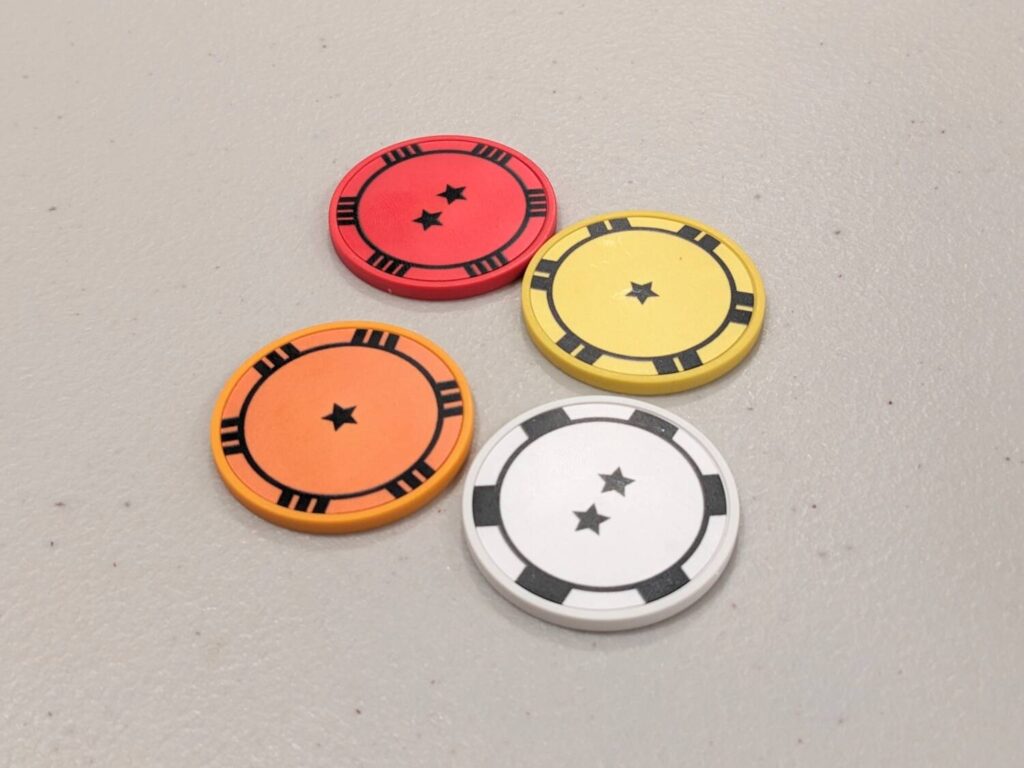
If they have, the players get to “open” one of the three bank vaults by flipping a vault card from its gray side to its bright yellow money side. Open three vaults, and the table collectively wins the game. If the players lose the hand, they flip a bright red alarm card face-up. Trip three alarms and all players lose.
The tension is brilliant, and I was really impressed with how thick the tension was each time a round went from turn to river. That sometimes meant that a player who thought they had two terrible hand cards suddenly went from Jack-high on the table to a flush, because they had two low spades in their hand and suddenly had a five-spade flush available thanks to the fifth card being a spade. Then, there was a scramble—quietly, that player went from always selecting a one- or two-star chip to desperately wanting the five-star chip in a five-player game.
The whole no-talking thing? Crucial. In one of my three plays (I tried The Gang at three players, five players, and a second group of five different players), we had a couple people who had never played poker at the table. The Gang features an extremely helpful pair of player aid cards, one of which lists poker hand hierarchy. Still, we decided to talk during that game but not reveal any specific cards in hand. It didn’t help—we lost that game on the fifth and final hand—but it was still interesting to see how things would play out.
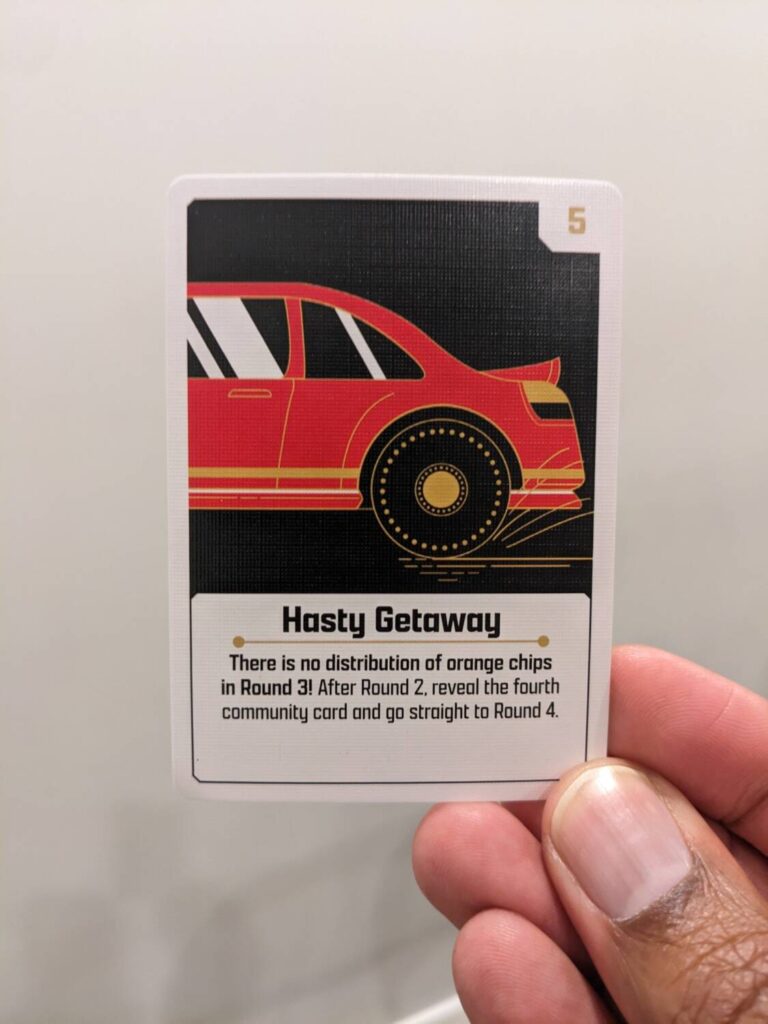
A Blast, with Conditions
I had a lot of fun with The Gang and that should have come as no surprise, given how I feel about the general quality of the games coming out of House KOSMOS (the Exit: Advent Calendar games, Noobs in Space, The Adventures of Robin Hood). Two of my three plays of The Gang used only the basic game mode, and I loved those plays. My third game used the Advanced mode components, where every round after the first features a host of conditional elements that either make the game harder (if players keep winning hands) or easier (if they keep losing).
For players who do a lot of rounds of The Gang, I could see the extra modes being a requirement…games like The Crew get dry fast if you only play the first 5-10 different missions (of the 50 included in the box). But I’m happy to say that I haven’t felt the need to go beyond the basic play mode of The Gang so far and I’m having a blast—as long as the player count remains high.
That’s because my three-player game of The Gang was fairly weak. It’s often very easy to tell who has the best hand, who has the worst, and who has middling fare, especially if everyone knows how to judge a poker hand’s quality. We won our three-player game with relative ease, and I wasn’t sure if this was going to hold up with more players.
My second and third games both featured five players, and that changed everything. The drama was real and the game became harder with more players, which is just the way I like it. Someone almost always knows when they have a pile of crap. Maybe they are holding a two of diamonds and a three of clubs: there’s no chance at a straight after the river, and the highest card on the table is a 10 or a Jack. Great. But it’s the middle that creates so much drama every round. What if two players are holding a low pair, and they are jostling over who should take the two-star chip and who should grab the three-star chip?
That kind of thing happened in every round during the red chip phase, and I loved it. I loved it more because the players couldn’t talk. When players revealed cards, there was almost always a collective gasp, or a “you dirty *&^%$!!” moment, or a big, fat PHEW as players moved up the line.
The Gang accommodates 3-6 players, but my advice is to play the game with at least five. For players who all consider themselves knowledgeable poker players, I would start with the Advanced Mode then go up from there.
The Gang is a fun concept that turned into a fantastic time at the table. I also love the playtime—my games took anywhere from 15-25 minutes. Pick this one up, especially if you are a Texas Hold ‘Em fan looking for more ways to integrate poker into your life!


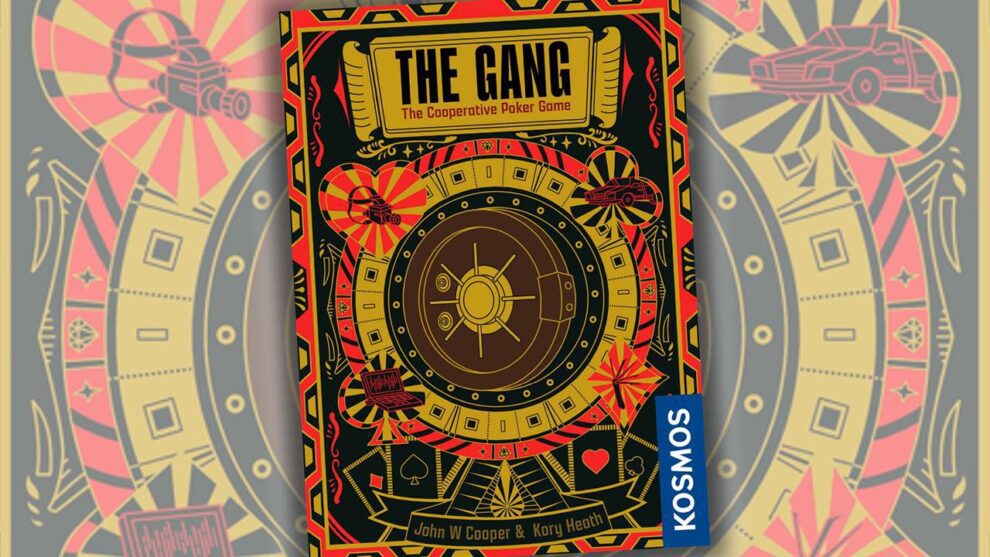

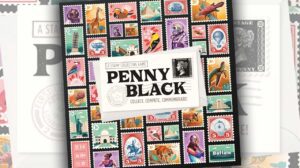
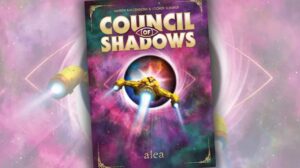






Add Comment